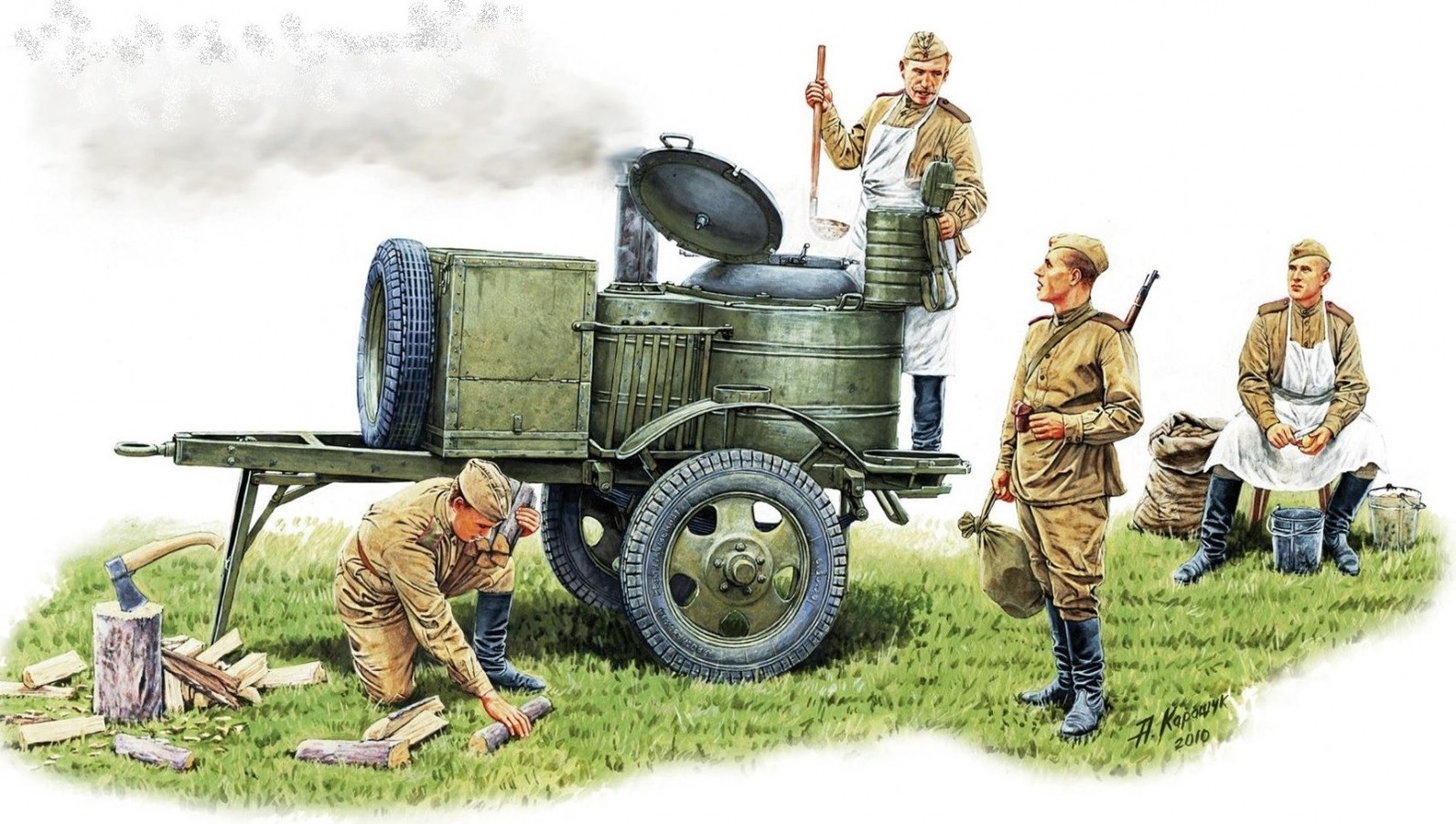With the onset of autumn and winter cold weather, warmth in the house becomes the main component of coziness and comfort. Centralized heating is used to heat apartment buildings. Owners of country houses living in settlements remote from heating mains have to use individual heating devices: stoves, fireplaces, heating boilers. The latter, according to the type of source of energy consumed, are divided into solid fuel, gas, combined and electric. The editorial staff of the site "bestx.htgetrid.com/en/" presents an overview of the best electric boilers for 2020 ", compiled on the basis of customer reviews and expert recommendations.
Content
A few words about the history of the development of heating systems
Man has always heated his home. Let us omit the primitive times, when people wrapped themselves in skins and kept the fire in caves. Let's move to a time when humanity began to create central heating systems. This scheme was used in the Roman Empire. The walls and floors of the living area were equipped with ducts through which warm air circulated, heated by stoves.

Interesting! Such a device first appeared in ancient Greece and was called "Hypocaust", translated from Greek - under (in the sense under the floor) and heated, red-hot. The Romans perfected it. Most often, in this way, the floors and walls in Roman baths (baths) were heated. Only very wealthy Romans could afford a hypocaust device for heating their homes, and not the entire complex, but only some rooms.
Water heating
With minor modifications, such heating systems have been used in different countries for centuries. Back in the 17th century, the residences of Russian emperors were heated with just such devices. However, this method had one significant drawback. As you know from the school physics course, bodies expand when heated and contract when cooled. Expansion and contraction cycles destroyed channel structures over time, i.e. the supporting structures of buildings - walls and ceilings - were destroyed. They needed constant repairs, sometimes very serious ones.
The idea to heat the room with hot water came to the head of the English engineer Evelyn. True, he developed a hot water heating system for the greenhouse. In residential premises, water heating was used a little later. The first hot water heating system in Russia was installed in the 18th century in the summer palace of Peter I.
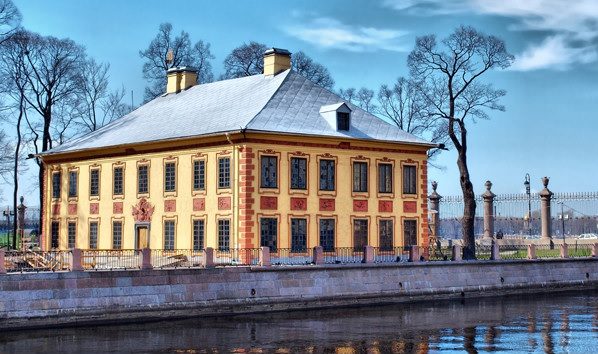
The 19th century was marked by the appearance of steam engines. Engineering thought immediately proposed the use of waste steam for heating structures that occupy large areas.
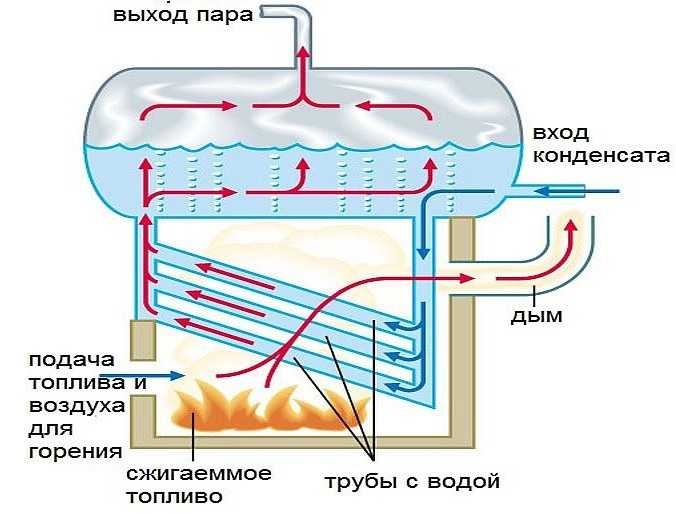
Steam and water heating in those days was carried out due to the natural circulation of the heat carrier, using the tendency of the heated liquid and steam to rise up. Only with the invention of electric motors, water heating systems began to be equipped with circulation pumps. This happened already in the XX century.
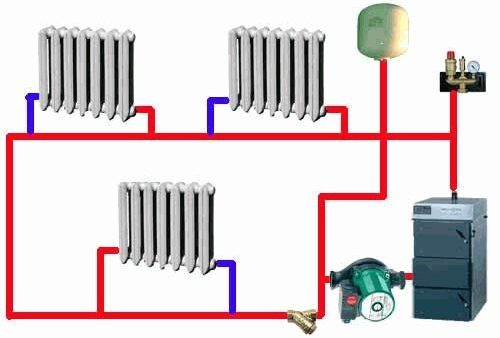
Types of heating boilers
Various energy sources are used to heat water in boilers. Accordingly, boilers are distinguished:
- solid fuel;
- on liquid fuel (solar oil, fuel oil);
- gas;
- electrical;
- combined: gas / solid fuel, gas / diesel fuel, gas / power supply, etc.
Interesting! The cauldrons in which food is cooked are called digestion boilers. Their design is in many ways similar to the design of heating boilers. A typical representative of a solid fuel digester is a field army kitchen.
What are the boilers
Solid fuel
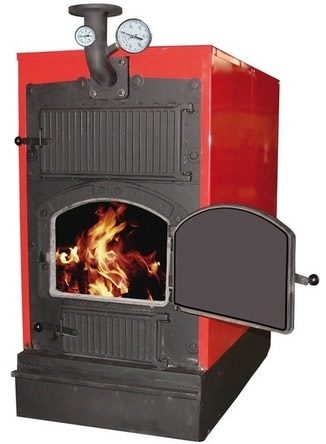
Works on wood, coal, peat briquettes. During its operation, a sufficient amount of ash is formed, which must be removed not only from the furnace, but also from the territory of a country house. The process of fuel combustion is oxidative, that is, it occurs only with a sufficient amount of oxygen, the content of which in the air is 20.93%. The gases formed during fuel combustion must also be removed. This requires the installation of chimneys and a chimney. To store the fuel supply, you need to have a room of considerable size. In the process of transporting and storing fuel reserves, garbage is necessarily generated, and when coal and peat briquettes are used, dust is generated. In addition, unloading and storing fuel is a somewhat tedious process.
The efficiency of a solid fuel boiler is theoretically 90%. However, this value is highly dependent on the quality of the fuel, its moisture content and calorific value, and these are values that are constantly changing. Moisture in the fuel and combustion air reduces its efficiency. Part of the heat is spent on its evaporation, as a result of which soot accumulates on the walls of the chimney, which reduces the draft and performance of heating equipment.
For complete combustion of fuel, i.e. for the boiler to operate at maximum efficiency, a strictly defined amount of air must be supplied to the furnace. Lack of air will lead to a lack of oxidation of the fuel and a decrease in the amount of heat from its combustion. Excessive air supply (cold air enters the furnace), reduces the temperature of gases released during fuel combustion, which again contributes to the deposition of soot on the walls of the chimney. Automation of the process is reduced to regulating the boiler power by opening and closing the air damper, depending on the temperature in the room.

When the fuel has flared up well, gave off heat to the maximum and heated the room, the automation closes the flap and the fuel burns inefficiently, with less heat generation and the formation of soot. It turns out that the automation of solid fuel heating units interferes with the correct flow of the fuel combustion process. Nevertheless, a solid fuel unit is the most suitable option for heating a house in the absence of centralized gas and heat supply. However, the use of solid fuel boilers has the following disadvantages:
- The need for significant areas for fuel storage;
- Mandatory air supply to the furnace;
- The need for a chimney and chimney;
- Formation of ash, soot in the chimney, the need for periodic routine maintenance to clean and remove fuel combustion products;
- The cost of solid fuels exceeds the cost of natural gas;
- In comparison with electricity, the cost of fuel is much lower, but this lag is offset by the need to purchase it in large quantities, the need for unloading and storage, and a lower efficiency of the solid fuel boiler.
Heating units for liquid fuel
All the disadvantages of solid fuel heating equipment are inherent in this type of boilers, since, apart from the aggregate state of the fuel (liquid and solid), all the same hydrocarbons are burned in the furnaces.To the listed disadvantages is added the unpleasant smell inherent in burning diesel fuel and fuel oil. To store the required amount of liquid fuel, you will need a special sealed container. Agree, it is inconvenient to store dozens of canisters of diesel fuel in a barn.
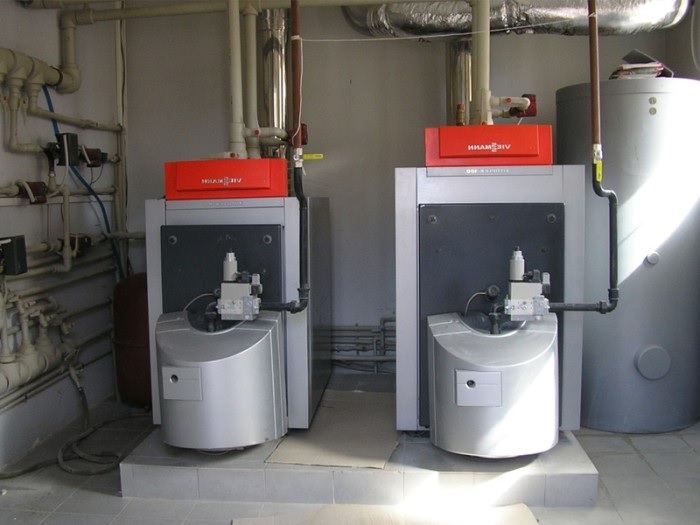
Liquid fuel boilers are produced only in a floor-standing version. Its installation will require the construction of a separate room, which must be carefully ventilated and meet all fire safety requirements.
The device of liquid fuel boilers differs from solid fuel boilers by the presence of a special built-in or hinged burner and a heat exchanger. The built-in burner is set at the factory. Hinged work will have to be adjusted independently. The advantages of liquid fuel devices include:
- High power and efficiency, ensuring the possibility of efficient heating of buildings with a large volume;
- The cost of fuel is less than the cost of electricity;
- Documentation and permission for operation is easier than when using gas equipment;
- The high level of automation minimizes maintenance and routine maintenance.
The disadvantages of devices of this type are also enough:
- The presence of a special tank for storing fuel and a pipeline between it and the boiler is mandatory;
- The need to build a well-ventilated separate room;
- High noise level during burner operation;
- Used only for heating, always single-circuit;
- Dependence of the liquid fuel unit on an uninterruptible power supply;
- At low temperatures, the fuel thickens, making it difficult for it to enter the burner. Insulation of the room with the equipment is required.
Gas
Natural gas is the cheapest type of energy source. Modern gas boilers are equipped with automation that ensures economical fuel consumption, depending on the room temperature, and safe operation. Combustion of any type of fuel requires a system for removing combustion products through chimneys using forced ventilation.
In the presence of a centralized gas supply, gas boilers are the best option for heating equipment. However, it also has its own advantages and disadvantages. The advantages include:
- Cheap energy carrier;
- Operation is simple and does not require special skills;
- High power and efficiency;
- High degree of automation;
- Does not require a special room. Suitable for installation in small spaces;
- Compact, available in both floor and wall versions;
- Single and double-circuit.
There are also disadvantages:
- Self-assembly of gas equipment is not possible. The participation of qualified specialists and the execution of the relevant documents are required.
- Gas equipment is installed only if there is a project that costs a lot and requires many approvals and permits. The process is long and tedious.
- Regular checks of the technical condition of equipment, preventive and routine maintenance are required in accordance with the schedule of a specialized organization.
- Faulty ventilation is not allowed.
Electrical
They do not need to burn fuel in a combustion chamber in the presence of air. They do not emit combustion products into the atmosphere, therefore, this is the most environmentally friendly option of equipment. Its compact size and quiet operation allow it to be placed in small spaces for any purpose.
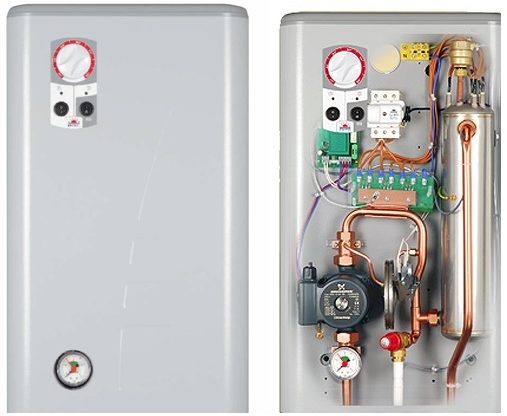
Electric boiler device
The unit housing contains:
- a stainless steel heat exchanger with built-in tubular electric heaters (heating elements);
- circulation pump;
- safety valve;
- built-in expansion tank.
Not a single, even the most budget model, is produced without a control panel and display.
Manufacturers produce electric boilers of various power requirements. Devices consuming up to 12 kW can be powered from a 220 and 380 V network (single-phase and three-phase). From 12 kW, the units are only available in three-phase. Devices designed only for heating water are called boilers. A single-circuit unit paired with an electric boiler will fully provide housing with heat and hot water for household needs.
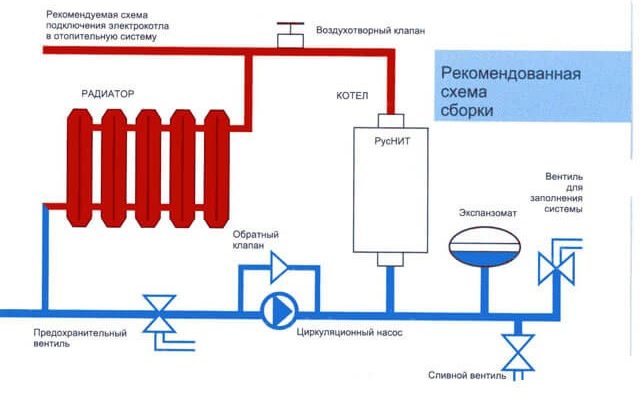
Small single-circuit devices can work in parallel with any other type of heating equipment, including in the presence of centralized heating, as an emergency reserve. Thus, the owner will protect his home from any emergency situations with heating, in the cold season, or during short-term cold snaps, in the periods between two heating seasons. Overheating protection is provided by the presence of the following elements in the circuit:
- safety valve for relieving pressure exceeding 3 bar;
- expansion tank;
- a coolant flow sensor that controls the timely activation of the circulation pump;
- thermostat that regulates the water temperature in the circuit.
The electric boiler can be easily integrated into the system "Smart House»Since it has a minimum number of control mechanisms (in comparison with solid fuel liquid and gas). It is possible to implement various scenarios of its automatic operation, which makes it energy-saving equipment.
What are electric boilers
There are three types of electric heating units:
- Heating elements;
- electrode;
- induction.
Enough has already been said about heating elements. It remains to consider their advantages and disadvantages.
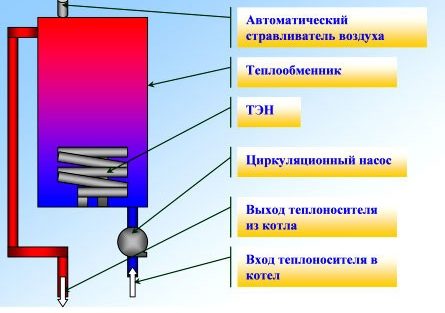
The main disadvantages of heating elements is the mandatory formation of scale on their working surfaces. It reduces the performance of the heating equipment and may cause malfunction. Owners of this type of apparatus need to be prepared for periodic and even emergency replacement of heating elements.
The advantages of this type of boilers are much greater than the disadvantages:
- they are inexpensive;
- as a coolant, you can use not only water, but also non-freezing liquids, which is especially important when they heat country houses;
- easy to assemble;
- it is possible to carry out stepwise power control, thereby reducing electricity consumption.
Electrode

It differs from the heating element in a simpler design, smaller dimensions and the principle of operation. An electric current is passed between the electrodes and heats the water. The advantages include:
- simplicity of the device;
- affordable price;
- high efficiency;
- Scale on the electrodes can cause loss of performance, but not equipment damage.
Along with such obvious advantages, the electrode assemblies have serious disadvantages:
- water must have a certain electrical conductivity, to achieve which it is required to constantly monitor its composition or use a very expensive special liquid;
- the use of conventional non-freezing liquids is excluded;
- operation of electrode devices is unsafe, due to the high probability of electric shock, therefore, reliable grounding is required;
- heating water with electrodes is an electrolysis process with the release of gases, sometimes poisonous, so the room must be well ventilated.
Induction
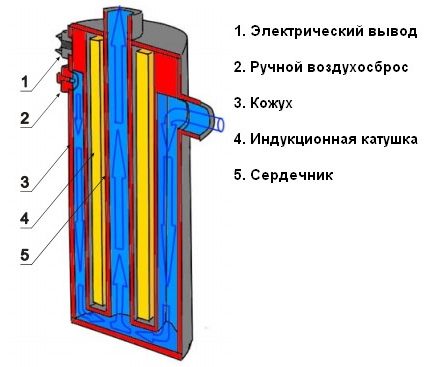
The water is heated by the heat from the ferrimagnetic core placed in the tank and heated by induction currents. Devices of this type are not afraid of scale, its efficiency remains constant, the water heats up quickly.An induction boiler can operate without breakdowns for several decades.
Among the disadvantages are the following:
- induction devices are quite expensive;
- forced circulation of the coolant is required;
- heavy weight;
- the equipment is innovative, the advantages and disadvantages have not been studied enough, therefore "surprises" are possible.
Analyzing all of the above, it becomes clear why the popularity of heating elements remains the highest.
Which boiler to choose
What you should pay attention to when buying an electric heating unit:
- Power. This parameter is decisive. The larger it is, the larger the area can be heated. The efficient operation of the heating unit depends on how well the dwelling is insulated, or how great the heat loss in the house or apartment is. Ideally, it is worth contacting specialists who will calculate all heat losses and select a device of appropriate power. You can use a simple and rough formula: for every 10 m² of area, 1 kW of the unit's power consumption is required. In any case, it should be remembered that the better the house is insulated, the less electricity the unit will "eat".
- Characteristics of the power supply network. Depending on the power consumption, the unit can be powered from a 220 V, 380 V, 220/380 V. Powerful devices (over 12 kW) are powered only from a 380 V. In any case, you should make sure whether the intra-house or intra-apartment wiring will withstand the expected load.
- Installation method. Electrical devices are most often produced in a wall-mounted version. Induction can be outdoor. The choice in this case depends on the size and weight of the equipment.
- Which company is the best to buy the product? Of course, from the best manufacturers, the popularity of models of which is based on high quality, durability and a developed service network. Pay attention to the warranty periods for service and repair of the product. The bigger they are, the better.
- Automation level. Electric devices work perfectly in automatic mode. It is enough to have a temperature sensor in the kit, and preferably two: one indoors, the other outdoor. Turning on and off the circulation pump is easy to organize according to signals from temperature sensors. This will be enough to maintain a comfortable room temperature and reduce energy consumption.
- The purchase price plays an important role. But choosing equipment based on price alone is fundamentally the wrong decision. The cheapest heating units are low-power and will not be able to provide a comfortable temperature in a room with an area of more than 30 m².
Here are the main criteria for choosing an electric heating equipment. Collect as much information as possible about it before buying. Listen to tips and advice from experienced users. It is necessary to know the area of the heated premises and calculate the required power of the device and the required functionality. Consult a qualified electrician about the readiness of the electrical wiring in your home. If necessary, replace wiring and automatic devices. Find out from the seller what popular models are on sale, read the description carefully, find out how much the product costs, how to connect it.
Important! Ask the seller under what conditions the manufacturer can refuse to repair his product free of charge if it breaks down during the warranty period. If the installation, connection and first start-up of the product took place without the participation of a service center specialist and the execution of the corresponding act (you will have to pay for the service), the manufacturer may refuse to troubleshoot free of charge, citing incorrect installation.
Rating of quality electric boilers
Ferroli Zews 6
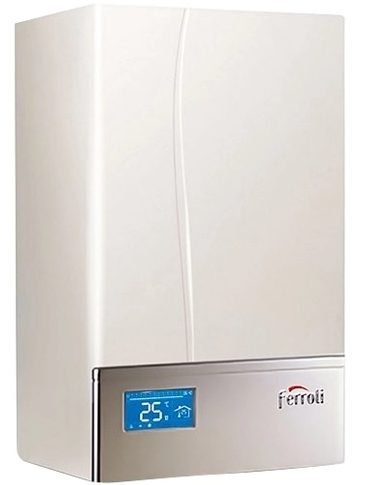
The tenth place in the ranking is given to a product from the Italian brand Ferroli Zews 6. The company was founded by the Ferroli brothers in 1955. It was then that the brothers sold their first steel heating boiler. Today the company owns a dozen manufacturing plants in Germany, Spain and at home. Ferroli products are famous for their traditionally high quality. The Zews 6 model is a 6 kW single-circuit device. The maximum heated area does not exceed 60 m². Includes built-in circulation pump, expansion tank for 10 liters, display. Electronic control. The manufacturer claims that the efficiency of the device is 99.5%. The average cost of the product is 4180 rubles.
Advantages:
- high quality;
- electronic control;
- built-in pump and expansion tank;
- affordable price.
Disadvantages:
- not found.
Evan Warmos-VI-9.45
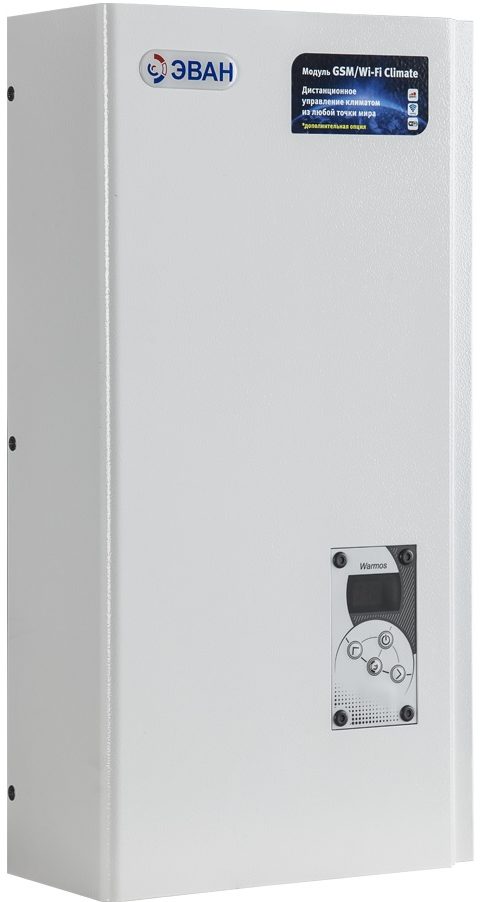
In ninth place is the device of the Russian brand Evan, model Warmos-VI-9.45. The products of this brand owe their popularity to the high quality of assembly and all circuit components that meet European standards. This model is a three-phase heating element single-circuit wall-mounted unit with a power of 9.45 kW. The maximum heated area, based on the ratio of 1 kW per 10 m², will be 94.5 m². The device is equipped with a display, protection against overheating and freezing, a thermometer. The manufacturer guarantees trouble-free operation for two years. The average cost of the product is 15878 rubles. According to buyers - a very good price-quality ratio.
Advantages:
- silent;
- three-stage load regulation makes its operation quite economical;
- Heating elements of Czech production, excellent quality;
- built-in circulation pump;
- overheat protection.
Disadvantages:
- not found.
ZOTA 9 Lux
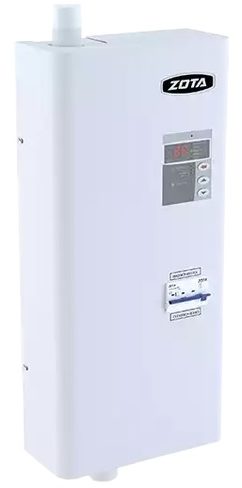
The eighth place is taken by the model of the Krasnoyarsk plant of heating equipment and automation ZOTA 9 Lux. This is a single-circuit heating unit with three tubular heaters, heat output of 3-9 kW. The maximum heated area for this unit is 90 m². It can be powered from 220 V and 380 V mains, has a rather compact size and weighs only 18 kg. The device with an automatic diagnostic function is equipped with a display, an external temperature sensor, a thermostat, frost and overheating protection. It is possible to connect the underfloor heating circuit. The maximum pressure in the heating circuit is 6 bar. The average cost is 16,315 rubles.
Advantages:
- inexpensive;
- easy;
- automatic adjustment of work;
- three-stage power adjustment;
- low noise.
Disadvantages:
- when the pressure drops to 0.5 bar, a small noise occurs;
- the temperature sensor "overestimates" the real temperature, so the owner has to set the desired temperature to 29-30 ° C, which leads to excessive consumption of electricity.
Kospel Ekco.R2 18
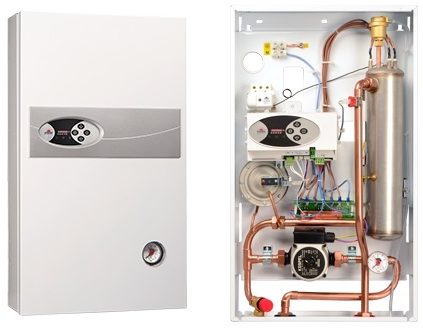
In seventh place is the model of the famous Polish brand Kospel Ekco.R2 18. The history of the company began with the production of electric water heaters almost thirty years ago. Currently, Kospel has established the production of water heaters, electric heating devices of various capacities, heat exchangers, solar collectors and steam generators. Infrared heaters, etc. The brand's models are well-deservedly popular all over the world. Kospel Ekco.R2 18 is a three-phase single-circuit heating unit with heating elements, with a capacity of 18 kW. The maximum heating area is 185 m². The device is equipped with a built-in circulation pump, display, room thermostat. Electronic control, there is self-diagnosis and overheating protection. The average cost of the product is 27,900 rubles.
Advantages:
- high-quality equipment and assembly;
- large heated area;
- maintaining a comfortable temperature using a room thermostat;
- the presence of a valve for air exhaust.
Disadvantages:
- sensitive to voltage surges, therefore, the purchase of a stabilizer is required.
RusNIT 21M
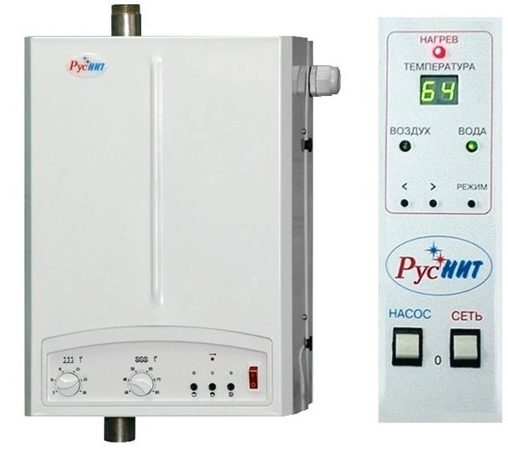
The sixth place in the rating is taken by the product of the Russian design RusNIT 21M.The company has been on the market since 1994, produces devices of various capacities, which are distinguished by their simplicity and reliability. RusNIT 21M is a three-phase single-circuit heating unit with a thermal power of 12 kW, wall-mounted. Electronic control and three-stage power control allows economical consumption of energy, while maintaining a comfortable temperature in rooms up to 120 m². It is completed with a built-in circulation pump, display, room thermostat, overheating protection. It is quite compact in size and weighs 17 kg. The average cost of the device is 28,200 rubles.
Advantages:
- compactness;
- simplicity of design;
- built-in circulation pump of the well-known German manufacturer Grundfos;
- three-stage power adjustment.
Disadvantages:
- possible electronics failures.
STOUT SEB-0001- 000012
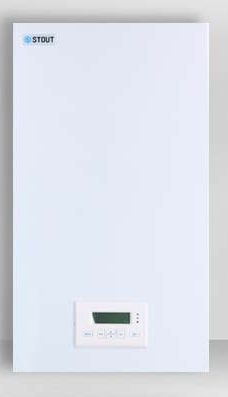
The fifth place is taken by the product of joint Russian - European development STOUT SEB-0001- 000012. The company manufactures products of European quality at an affordable price. 80% of the brand's products are manufactured in factories in Italy, Germany and Spain, certified according to GOST, EN and DIN. The STOUT SEB-0001- 000012 model is powered from a 220 V network, has a thermal power from 2 to 12 kW, one heating circuit. The maximum heated area is 120 m². Equipped with circulation pump, 12 liter expansion tank, external temperature sensor and room thermostat. The average cost of the product is 35,156 rubles.
Advantages:
- European quality;
- affordable price;
- 6 power steps;
- external temperature sensors and room thermostat.
Disadvantages:
- not identified.
Proterm Skat 14 KR 13
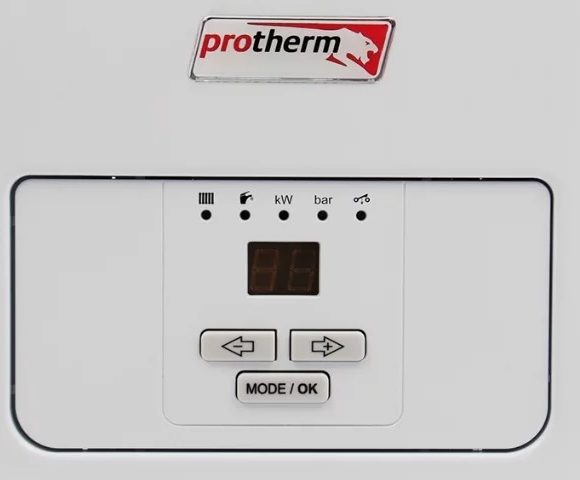
The fourth place in the ranking is occupied by the product of one of the most popular brands in Russia Proterm Skat 14 KR 13. Proterm models are produced by Vailant Group Rus LLC, which is a subsidiary of the German company Walliant GROUP. The Skat model is a single-circuit device that heats the heating water with heating elements. The device, with a capacity of 2-14 kW, has six stages of electronic control. It is powered by 380 V. The maximum heated area is 140 m². Equipped with a built-in circulation pump and a 7 liter expansion tank, a safety valve and an air vent. The average cost is 35,810 rubles.
Advantages:
- high quality;
- reliability;
- flexible power control system saves energy.
Disadvantages:
- high price.
Vaillant eloBlock 14
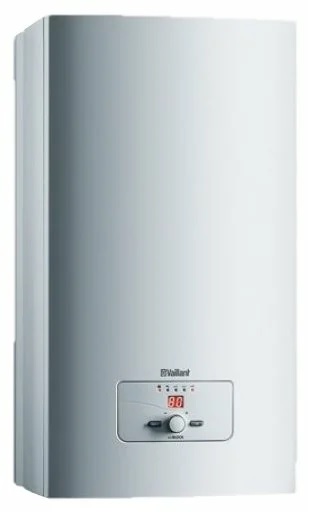
The top three in the rating is opened by the model of the German brand Vaillant eloBlock 14. The company has been a manufacturer of the best ventilation and heating equipment in Europe and beyond for more than a hundred years, thanks to the high quality of equipment and reliable control systems. The Vaillant eloBlock 14 model is a single-circuit heating element for space heating, with a capacity of 7 to 14 kW, capable of maintaining a comfortable temperature in a room with an area of 140 m². Three-phase supply voltage, two stages of power regulation. The kit includes:
- built-in pump and expansion tank;
- safety valve;
- air vent;
- display;
- electronic control.
The average cost of the model is 36,160 rubles.
Advantages:
- high quality;
- reliability;
- Efficiency 99%.
Disadvantages:
- not found.
Savitr Premium Plus 9
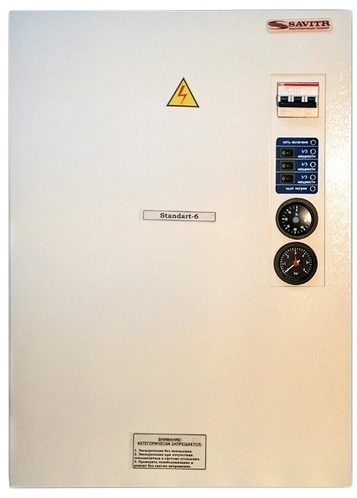
The second line of the rating is occupied by the model of the Moscow company Savitr Premium Plus 9. The company was “born” in 2010 on the basis of NPO Vetrostar. Provides the market with innovative electric heating equipment of its own design. The brand's products turned out to be so successful that they gained popularity in their segment and even crowded out some of the older competitors. The highlight of the Savitr models is the aromatization of the heating system using proprietary hardware and software. In our review, a model of a double-circuit device with a maximum power of 9 kW is presented. The power supply is single-phase and three-phase. Heats rooms, the area of which does not exceed 90 m². The model is equipped with a built-in circulation pump and a 12 liter expansion tank.To maintain a comfortable temperature in the rooms, the control circuit provides a programmer, an external temperature sensor and a room thermostat, a display. A safety valve and an air vent are provided to protect against overheating and freezing. The average cost is 47,000 rubles.
Advantages:
- the ability to fully automate the process with available hardware and software;
- reduction of electricity consumption due to programming of various operating modes, depending on the readings of the external and internal temperature sensors;
- implementation of heating and DHW functions with one device.
Disadvantages:
- high price;
Buderus Logamax E213-30
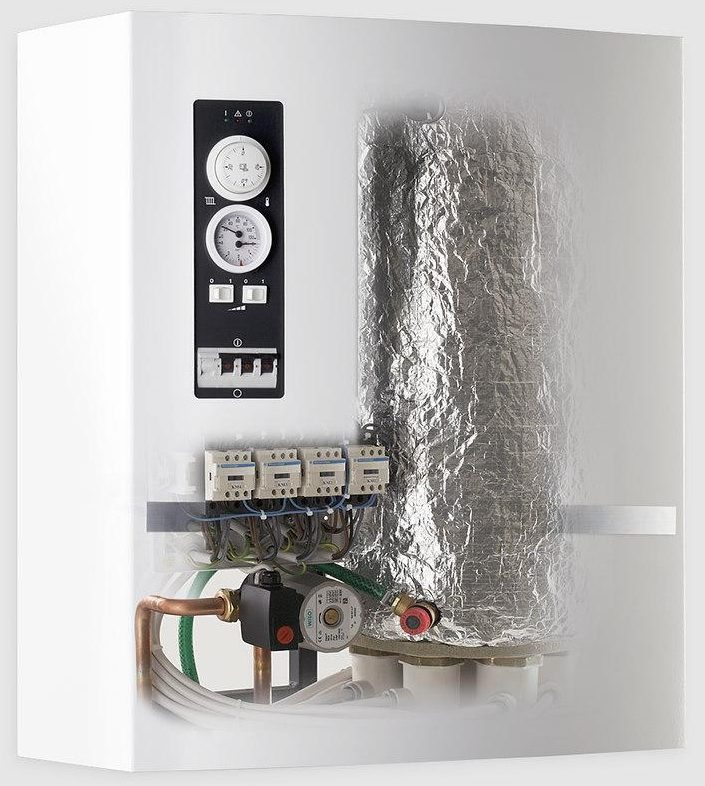
The first place in the rating and the best consumer reviews was won by the Buderus Logamax E213-30 model. The Buderus company began its activities in 1731. At that time, she produced cast iron elements for stoves and fireplaces. In the 19th century, the company started producing cast iron sectional boilers. Soon, the company's products became in demand not only in Germany, but throughout Europe. In 2003, Buderus merged with Robert Bosch GmbH. The popularity of the company's models is explained by the traditionally high German product quality. The Buderus Logamax E213-30 model is a single-circuit device with a maximum thermal power of 29.7 kW and can consistently maintain a comfortable temperature in houses with an area of up to 300 m². The efficiency of the device is estimated by the manufacturer at 99%. The device has 4 stages of regulation, it is powered from a 380 V network, it is equipped with a built-in circulation pump, a safety valve, overheating protection, and control of the coolant circulation. Mounting method - wall. The average price of the product is 76,900 rubles.
Advantages:
- high quality of elements;
- excellent build;
- large heated area;
- stable trouble-free operation.
Disadvantages:
- high price.
| Model name / country brand owner / manufacturer | Specifications | average price |
|---|---|---|
| Buderus Logamax E213-30 Germany | Heating boiler type - electric. The number of circuits is single-circuit. Max. thermal power 29.70 kW. Max. heat load 30.10 kW. Efficiency 99% Electronic control. Wall installation. Power stages 4. The mains voltage is three-phase. Maximum current 3F 45 A. Built-in circulation pump. Max. coolant temperature 90 ° C. Max. water pressure in the heating circuit 2.5 ar Comfort Functions: indication of inclusion, protection against overheating, thermometer, manometer. Connection - a branch pipe for connecting a heating circuit 1 ". Dimensions (WxHxD) - 615x870x335 mm. Weight 53.5 kg. | 76,900 rubles |
| Savitr Premium Plus 9 Russia | Heating boiler type - electric, heating element. The number of contours is double-circuit. Max. thermal power 9 kW. Heated area 90 sq.m. Electronic control. Wall installation. Power stages 3. Mains voltage single-phase / three-phase Built-in circulation pump. Built-in expansion tank 12 l. Complete set: outdoor temperature sensor, room thermostat, display. Heat carrier temperature 5 - 80 ° С Hot water performance at 25 ° C 6 l / min Hot water performance at t 30 ° C 5.3 l / min Max. water pressure in the heating circuit 3 bar Comfort: programmer, indication of switching on, protection against overheating, thermometer, manometer. Safety Protection: safety valve, air vent. Heating circuit connection 3/4 ". Domestic hot water supply 1/2 "connection pipe. Dimensions (WxHxD) 600x690x225 mm. Weight 28 kg. | 47,000 rubles |
| Vaillant eloBlock 14 Germany | Heating boiler type electric, heating element. The number of contours is single-circuit. Thermal power 7 - 14 kW. Efficiency 99% Electronic control. Wall installation. Power levels 2. Three-phase mains voltage. Maximum current 3F-23 A Rated current of the circuit breaker 3F-25 A. Built-in circulation pump. Built-in expansion tank 10 l Package contents - display Heat carrier temperature 25 - 85 ° С Max.water pressure in the heating circuit 3 bar Functions: autodiagnostics, frost protection, pump blocking protection, activation indication, overheating protection, thermometer, pressure gauge. Protection: safety valve, air vent. Connection Heating circuit connection 3/4 " Dimensions (WxHxD) 410x740x310 mm. Weight 33.3 kg. Additionally: service life is 10 years. Warranty period 900 days. | 36160 rubles |
| Proterm Skat 14 KR 13 Germany / Slovakia | Boiler type electric, heating element. The number of circuits is single-circuit. Thermal power 2 - 14 kW, efficiency 99% Electronic control. Wall installation. Power levels-6. The mains voltage is three-phase. The maximum current is 3F-23 A. The rated current of the 3F circuit breaker is 25 A. Built-in circulation pump. Built-in expansion tank 7 l. Complete set-display. Heat carrier temperature 25 - 85 ° С. Max. water pressure in the heating circuit 3 bar. Comfort Functions: autodiagnostics, frost protection, underfloor heating connection, pump blocking protection, inclusion indication, overheating protection, thermometer. Protection: safety valve, air vent. Connection: heating circuit connection 3/4 " Dimensions (WxHxD) 410x740x310 mm. Weight 34 kg. Additionally: service life is 10 years. Warranty period 900 days. | 35810 rubles |
| STOUT SEB-0001-000012 Russia / Italy / Germany | Heating boiler type electric, heating element. The number of circuits is single-circuit. Thermal power 2 - 12 kW. Heated area 120 sq.m. Electronic control. Wall installation. Power levels 6. The mains voltage is three-phase. Rated current of the circuit breaker 3F-25 A. Built-in circulation pump. Built-in expansion tank 12 l. Equipment: outdoor temperature sensor, room thermostat, display. Heat carrier temperature 10 - 85 ° С Max. water pressure in the heating circuit 3 bar. Functions: inclusion indication, overheating protection, thermometer, pressure gauge External control connection. Protection: safety valve, air vent. Connection: 3/4 "heating circuit connection. Dimensions (WxHxD) 420x765x300 mm. Weight 40 kg. Additionally: Service life-10 years. Warranty period 2 y. | 35156 rubles |
| RusNIT 212M Russia | Heating boiler type electric, heating element. The number of contours is single-circuit. Max. thermal power 12 kW. Heated area 120 sq.m. Electronic control. Wall installation. Power stages 3. Three-phase mains voltage Maximum current 3F 19 A. Complete set - room thermostat. Heat carrier temperature 35 - 85 ° С. Max. water pressure in the heating circuit 3 bar. Comfort Functions: indication of inclusion, protection against overheating. Connection Heating circuit connection 1 ½" Dimensions (WxHxD) 375x530x270 mm. Weight 17 kg. | 28,200 rubles |
| Kospel Ekco.R2 18 Poland | Heating boiler type - electric, heating element The number of circuits is single-circuit. Max. thermal power 18 kW. Heated area 185 sq.m. Electronic control. Wall installation. Power stages 2. The mains voltage is three-phase. Maximum current 3F 27.40 A. The rated current of the 3F circuit breaker is 32 A. Built-in circulation pump. Equipment: room thermostat, display. Heat carrier temperature 35 - 85 ° С. Max. water pressure in the heating circuit 3 bar. Comfort Functions: autodiagnostics, switching on indication, overheating protection, thermometer, manometer. Safety Protection: safety valve. Connection Heating circuit connection 3/4 ". Dimensions (WxHxD) 380x660x175 mm. Weight 18 kg. | 27,900 rubles |
| ZOTA 9 Lux Russia | Heating boiler type electric, heating element. The number of circuits is single-circuit. Thermal power 3 - 9 kW. Heated area 90 sq.m. Electronic control. Wall installation. Power stages 3. Mains voltage is single-phase / three-phase. Complete set: outdoor temperature sensor, room thermostat, display. Heat carrier temperature 30 - 90 ° С. Max. water pressure in the heating circuit 6 bar. Functions: autodiagnostics, frost protection, underfloor heating connection, programmer, power on indication, overheating protection, thermometer. Features: external control connection Heating circuit connection 1 ¼" Dimensions (WxHxD) 290x730x160 mm. Weight 18 kg. Additionally: 1 year warranty. | 16,315 rubles |
| Evan Warmos-IV-9.45 Russia | Heating boiler type electric, heating element. The number of circuits is single-circuit. Max. thermal power 9.45 kW. Heated area 94.5 sq.m. Efficiency 99% Electronic control. Wall installation. Power stages 3. The mains voltage is three-phase. The rated current of the 3F circuit breaker is 25 A. Complete set - display. Heat carrier temperature 5 - 85 ° С. Comfort: Functions: autodiagnostics, frost protection, underfloor heating connection, power on indication, overheating protection, thermometer. Connection: Heating circuit 1 ¼ " Dimensions (WxHxD) 380x640x245 mm. Weight 27 kg. Additionally: Service life 10 years. Warranty period 2 y. | 15878 rubles |
| Ferroli Zews 6 Italy | Power - 6 kW. Heated area - 60 sq. M. Electronic control. Type - heating element. Installation method - wall-mounted. Number of heat exchangers - 1. Number of circuits -1. Built-in expansion tank 10L. The diameter of the heating circuit connections is 3/4 ''. Power supply voltage 220/380 V. Efficiency - 99.5%. Warranty 24 months Weight - 28.6 kg. | 4180 rubles. |
When buying an electric heating boiler, you should remember that electricity consumption directly depends on the insulation of house structures. Therefore, before installing the heating system, you need to take care of the thermal renovation (insulation) of your home. We hope that our review will tell you how to choose the right model, help you navigate among a huge number of manufacturers and not make mistakes when choosing a decent model of an electric boiler for a private house, summer cottage or as a backup for heating an apartment.

